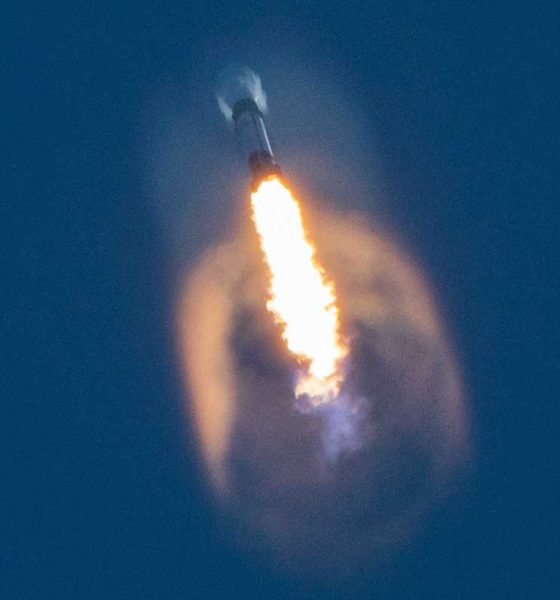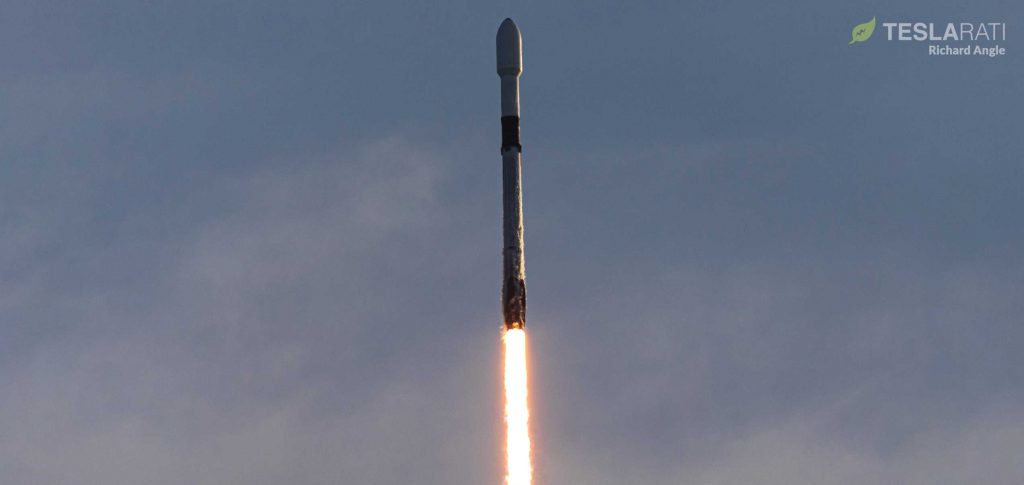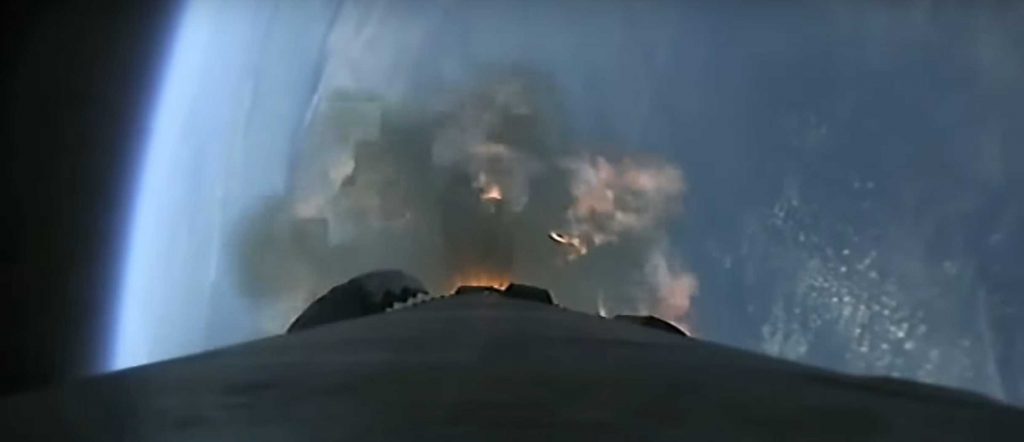

News
SpaceX's in-flight rocket engine failure threatens NASA astronaut launch debut
An in-flight rocket engine failure during SpaceX’s March 18th Starlink launch could pose a threat to the company’s imminent NASA astronaut launch debut according to a statement provided by the space agency yesterday.
SpaceX and NASA are currently working around the clock to prepare a Falcon 9 rocket and Crew Dragon spacecraft for the company’s inaugural astronaut launch, a flight known as Demonstration Mission 2 (Demo-2/DM-2). All launch vehicle and spacecraft hardware – including booster B1058, an expendable upper stage, a spacecraft trunk, and the Crew Dragon capsule itself – are already believed to be at SpaceX’s Florida launch and processing facilities.
Prior to March 18th, the biggest gating items were believed to be a few final parachute tests and a whole lot of paperwork and reviews, as well as some important but less showstopping astronaut training. Unfortunately, SpaceX has suffered two unforeseen issues of varying severity in the last few days, both of which are now all but guaranteed to impact Crew Dragon’s astronaut launch debut schedule.
“According to the CCtCap contracts, SpaceX is required to make available to NASA all data and resulting reports. SpaceX, with NASA’s concurrence, would need to implement any corrective actions found during the investigation related to its commercial crew work prior to its flight test with astronauts to the International Space Station. NASA and SpaceX are holding the current mid-to-late May launch timeframe, and would adjust the date based on review of the data, if appropriate.”
NASA — March 25th, 2020

On March 18th, less than three minutes after liftoff and shortly before stage separation was scheduled, Falcon 9 booster B1048 – on its historic fifth launch attempt – suffered an engine failure visible on SpaceX’s official webcast. By all appearances, Falcon 9’s autonomous flight computer accounted for the engine’s failure, shutdown, and the resultant loss of thrust by burning B1048’s eight remaining engines for several seconds longer than planned.


While that extra few seconds of burn time likely ensured that the rocket’s upper stage was able to make it to the correct orbit after stage separation, roughly five minutes after B1048’s extremely rapid engine failure, contact was lost. For the first time ever, there were no landing burn-related call-outs from SpaceX launch operators, the first sign that something was seriously wrong. A few minutes later, SpaceX’s webcast hosts acknowledged that the booster had been lost, perhaps lacking the propellant it needed to attempt a landing.
For reference, Merlin 1D engines likely consume some ~270 kg (600 lb) of fuel each second. Falcon 9’s landing propellant reserves are believed to be on the order of 50+ metric tons (110,000 lb). Excluding the failed engine, eight Merlin 1Ds burning at full thrust for an additional 5 seconds would consume 20% of the propellant needed for landing; 10 seconds and it would use 40%.
The anomaly was Merlin 1D engine’s first in-flight failure ever. The 2012 failure of one of an original Falcon 9 V1.0’s rocket’s nine Merlin 1C engines is SpaceX’s only other in-flight failure.
It’s likely that B1048’s engine failure was primarily related to the fact that the booster was SpaceX’s pathfinder for a fifth-flight reusability milestone, making it the most reused rocket booster ever launched. NASA currently requires all of its Crew Dragon missions to launch on new Falcon 9 rockets, hopefully mitigating direct corollaries between the Starlink L6 anomaly and astronaut launches. Regardless, the space agency says that the company will now have to complete its internal failure review and implement necessary hardware, software, or rule changes before it’s allowed to launch NASA astronauts.

That investigation could take a matter of weeks, possibly even less, but it’s entirely possible that it could take months – let alone fixing the problems that allowed the in-flight Merlin 1D engine failure to happen in the first place. Ultimately, it will almost certainly make even the first flights of Falcon 9 and Heavy rocket boosters safer, but it could substantially delay SpaceX’s Demo-2 astronaut launch debut. Still targeted no earlier than (NET) mid-to-late May 2020, it’s safe to say that it’s reasonable to expect that schedule to slip over the next 4-6 weeks. Stay tuned for updates.

Elon Musk
Starlink passes 9 million active customers just weeks after hitting 8 million
The milestone highlights the accelerating growth of Starlink, which has now been adding over 20,000 new users per day.

SpaceX’s Starlink satellite internet service has continued its rapid global expansion, surpassing 9 million active customers just weeks after crossing the 8 million mark.
The milestone highlights the accelerating growth of Starlink, which has now been adding over 20,000 new users per day.
9 million customers
In a post on X, SpaceX stated that Starlink now serves over 9 million active users across 155 countries, territories, and markets. The company reached 8 million customers in early November, meaning it added roughly 1 million subscribers in under seven weeks, or about 21,275 new users on average per day.
“Starlink is connecting more than 9M active customers with high-speed internet across 155 countries, territories, and many other markets,” Starlink wrote in a post on its official X account. SpaceX President Gwynne Shotwell also celebrated the milestone on X. “A huge thank you to all of our customers and congrats to the Starlink team for such an incredible product,” she wrote.
That growth rate reflects both rising demand for broadband in underserved regions and Starlink’s expanding satellite constellation, which now includes more than 9,000 low-Earth-orbit satellites designed to deliver high-speed, low-latency internet worldwide.
Starlink’s momentum
Starlink’s momentum has been building up. SpaceX reported 4.6 million Starlink customers in December 2024, followed by 7 million by August 2025, and 8 million customers in November. Independent data also suggests Starlink usage is rising sharply, with Cloudflare reporting that global web traffic from Starlink users more than doubled in 2025, as noted in an Insider report.
Starlink’s momentum is increasingly tied to SpaceX’s broader financial outlook. Elon Musk has said the satellite network is “by far” the company’s largest revenue driver, and reports suggest SpaceX may be positioning itself for an initial public offering as soon as next year, with valuations estimated as high as $1.5 trillion. Musk has also suggested in the past that Starlink could have its own IPO in the future.
News
NVIDIA Director of Robotics: Tesla FSD v14 is the first AI to pass the “Physical Turing Test”
After testing FSD v14, Fan stated that his experience with FSD felt magical at first, but it soon started to feel like a routine.

NVIDIA Director of Robotics Jim Fan has praised Tesla’s Full Self-Driving (Supervised) v14 as the first AI to pass what he described as a “Physical Turing Test.”
After testing FSD v14, Fan stated that his experience with FSD felt magical at first, but it soon started to feel like a routine. And just like smartphones today, removing it now would “actively hurt.”
Jim Fan’s hands-on FSD v14 impressions
Fan, a leading researcher in embodied AI who is currently solving Physical AI at NVIDIA and spearheading the company’s Project GR00T initiative, noted that he actually was late to the Tesla game. He was, however, one of the first to try out FSD v14.
“I was very late to own a Tesla but among the earliest to try out FSD v14. It’s perhaps the first time I experience an AI that passes the Physical Turing Test: after a long day at work, you press a button, lay back, and couldn’t tell if a neural net or a human drove you home,” Fan wrote in a post on X.
Fan added: “Despite knowing exactly how robot learning works, I still find it magical watching the steering wheel turn by itself. First it feels surreal, next it becomes routine. Then, like the smartphone, taking it away actively hurts. This is how humanity gets rewired and glued to god-like technologies.”
The Physical Turing Test
The original Turing Test was conceived by Alan Turing in 1950, and it was aimed at determining if a machine could exhibit behavior that is equivalent to or indistinguishable from a human. By focusing on text-based conversations, the original Turing Test set a high bar for natural language processing and machine learning.
This test has been passed by today’s large language models. However, the capability to converse in a humanlike manner is a completely different challenge from performing real-world problem-solving or physical interactions. Thus, Fan introduced the Physical Turing Test, which challenges AI systems to demonstrate intelligence through physical actions.
Based on Fan’s comments, Tesla has demonstrated these intelligent physical actions with FSD v14. Elon Musk agreed with the NVIDIA executive, stating in a post on X that with FSD v14, “you can sense the sentience maturing.” Musk also praised Tesla AI, calling it the best “real-world AI” today.
News
Tesla AI team burns the Christmas midnight oil by releasing FSD v14.2.2.1
The update was released just a day after FSD v14.2.2 started rolling out to customers.

Tesla is burning the midnight oil this Christmas, with the Tesla AI team quietly rolling out Full Self-Driving (Supervised) v14.2.2.1 just a day after FSD v14.2.2 started rolling out to customers.
Tesla owner shares insights on FSD v14.2.2.1
Longtime Tesla owner and FSD tester @BLKMDL3 shared some insights following several drives with FSD v14.2.2.1 in rainy Los Angeles conditions with standing water and faded lane lines. He reported zero steering hesitation or stutter, confident lane changes, and maneuvers executed with precision that evoked the performance of Tesla’s driverless Robotaxis in Austin.
Parking performance impressed, with most spots nailed perfectly, including tight, sharp turns, in single attempts without shaky steering. One minor offset happened only due to another vehicle that was parked over the line, which FSD accommodated by a few extra inches. In rain that typically erases road markings, FSD visualized lanes and turn lines better than humans, positioning itself flawlessly when entering new streets as well.
“Took it up a dark, wet, and twisty canyon road up and down the hill tonight and it went very well as to be expected. Stayed centered in the lane, kept speed well and gives a confidence inspiring steering feel where it handles these curvy roads better than the majority of human drivers,” the Tesla owner wrote in a post on X.
Tesla’s FSD v14.2.2 update
Just a day before FSD v14.2.2.1’s release, Tesla rolled out FSD v14.2.2, which was focused on smoother real-world performance, better obstacle awareness, and precise end-of-trip routing. According to the update’s release notes, FSD v14.2.2 upgrades the vision encoder neural network with higher resolution features, enhancing detection of emergency vehicles, road obstacles, and human gestures.
New Arrival Options also allowed users to select preferred drop-off styles, such as Parking Lot, Street, Driveway, Parking Garage, or Curbside, with the navigation pin automatically adjusting to the ideal spot. Other refinements include pulling over for emergency vehicles, real-time vision-based detours for blocked roads, improved gate and debris handling, and Speed Profiles for customized driving styles.








